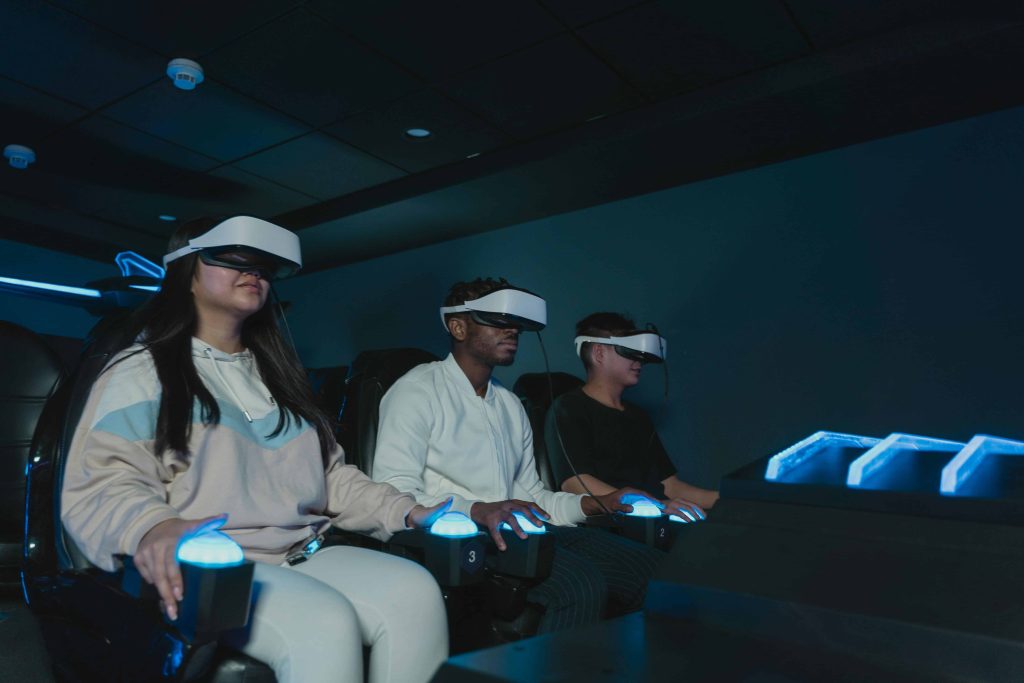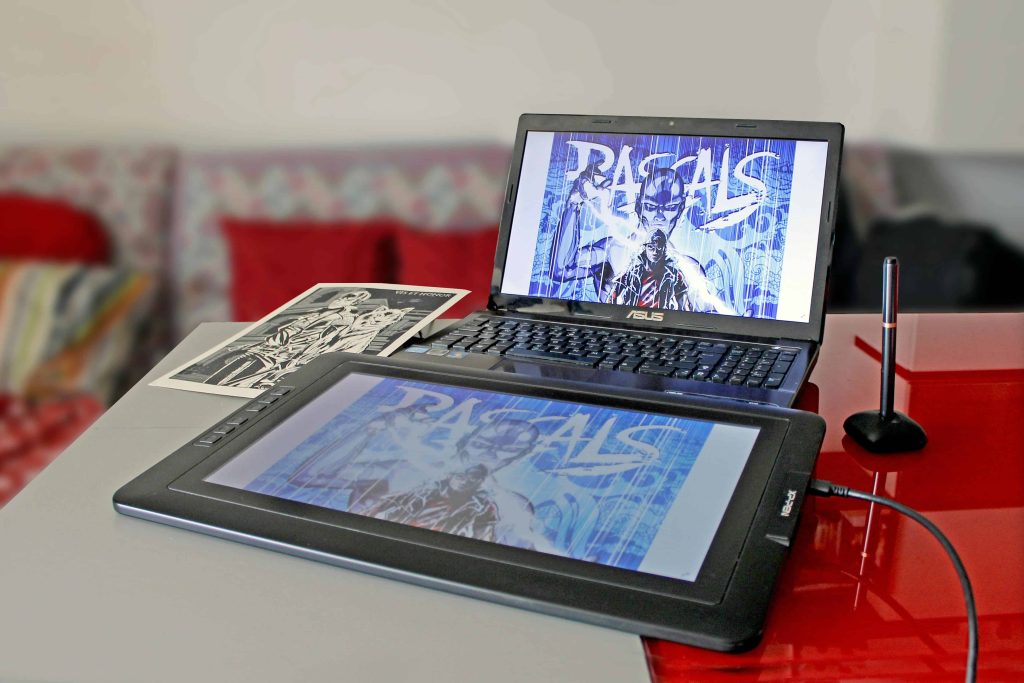
09 Sep Integrating Digital Elements in Physical Exhibitions
Immersive Experiences: The Role of Digital Elements in Modern Exhibitions
In today’s ever-evolving landscape of exhibition design, the integration of digital elements has become increasingly prevalent. Exhibitions are no longer confined to static displays; instead, they have evolved into dynamic experiences that seamlessly blend the physical and digital realms. This article explores the burgeoning trend of incorporating digital technologies into physical exhibitions and outlines strategies for effective implementation.
The traditional concept of exhibitions has undergone a significant transformation with the advent of digital technologies. Exhibitors are now leveraging interactive displays, augmented reality (AR), and virtual reality (VR) to enhance visitor engagement and create immersive experiences. This fusion of the physical and digital realms offers a multitude of benefits for both visitors and exhibition organizers.

Different Digital Technologies for Exhibitions
Interactive Displays
Interactive displays are pivotal in engaging visitors and facilitating a deeper understanding of exhibits. These displays, often equipped with touchscreens, empower visitors to access relevant information effortlessly. Projection mapping technology breathes life into static displays, transforming them into dynamic and captivating experiences. Through interactive displays, visitors are not merely observers but active participants in the learning process, enhancing their overall museum experience.
Augmented Reality (AR)
Augmented Reality (AR) revolutionizes the museum experience by seamlessly blending digital elements with physical exhibits. By overlaying digital content onto artifacts, AR provides visitors with enriched narratives and deeper insights. Whether highlighting intricate details or offering historical context, AR creates an immersive environment that captivates audiences. Visitors can interact with exhibits in novel ways, fostering a deeper connection and understanding of the subject matter. AR bridges the gap between the past and present, transforming traditional museum visits into interactive journeys of discovery.
Virtual Reality (VR)
Virtual Reality (VR) transports museum-goers into entirely digital realms, offering unparalleled levels of immersion. By immersing visitors in virtual environments related to the exhibition theme, VR unlocks new dimensions of engagement and exploration. However, VR implementation necessitates careful consideration of accessibility and potential limitations. Ensuring that all visitors can participate in the VR experience is crucial for creating an inclusive museum environment. Despite its challenges, VR holds immense potential for enhancing the educational and entertainment value of museum exhibits, paving the way for innovative storytelling and interactive experiences.

Effective Implementation Strategies
Seamless Integration
Efficiently intertwining digital elements with physical exhibits ensures a harmonious experience for visitors. By maintaining a delicate balance, the digital components serve to enrich rather than overshadow the tangible displays. This seamless integration allows visitors to transition effortlessly between the physical and digital realms, fostering a deeper understanding and appreciation of the exhibition’s narrative and themes.
Content and Design
Crafting digital content that resonates with the exhibition’s overarching theme and target audience is essential for maximizing visitor engagement. Through the use of high-quality visuals, compelling storytelling, and interactive features, digital elements captivate the audience’s attention, leaving a profound and memorable impact. Thoughtful consideration of content and design elevates the overall exhibition experience, drawing visitors into an immersive journey of exploration and discovery.
Accessibility
Prioritizing accessibility ensures that all visitors, regardless of ability, can fully engage with the digital aspects of the exhibition. Offering alternative formats, such as audio descriptions or tactile models, enables individuals with disabilities to access and appreciate digital content on an equal footing. By embracing accessibility measures, exhibitions promote inclusivity and diversity, creating an environment where every visitor feels valued and empowered to participate in the cultural experience.

Conclusion
In conclusion, the integration of digital elements into physical exhibitions marks a profound evolution in the museum experience, transcending traditional boundaries and offering dynamic, immersive encounters for visitors. By leveraging interactive displays, augmented reality (AR), and virtual reality (VR), exhibitions become engaging platforms for exploration and learning. However, successful implementation hinges on seamless integration, thoughtful content and design, and a commitment to accessibility. Ultimately, these strategies not only enhance visitor engagement but also foster inclusivity, ensuring that everyone can fully participate in and benefit from the cultural journey offered by modern exhibitions.
Key Takeaways
- Evolution of Exhibitions: Exhibitions are evolving with digital integration, moving from static displays to dynamic, interactive experiences blending physical and digital realms.
- Digital Technologies: Interactive displays, AR, and VR are transforming exhibitions, enhancing visitor engagement and understanding through immersive experiences.
- Interactive Displays: Touchscreen displays and projection mapping turn visitors into active participants, enriching their learning experiences.
- Augmented Reality (AR): AR overlays digital content onto physical exhibits, providing enriched narratives and deeper insights, fostering interactive exploration.
- Virtual Reality (VR): VR offers immersive experiences in entirely digital realms related to exhibition themes, though accessibility considerations are crucial for inclusivity.
- Implementation Strategies: Seamless integration of digital elements with physical exhibits, crafting content aligned with exhibition themes, and prioritizing accessibility ensure a harmonious and inclusive visitor experience.
FAQs
How do interactive displays enhance the museum experience?
Interactive displays engage visitors, offering easy access to information and transforming static exhibits into dynamic experiences. Visitors become active participants, deepening their understanding and connection to the subject matter.
What are the benefits and challenges of implementing Virtual Reality (VR) in exhibitions?
VR provides immersive experiences related to the exhibition theme, enhancing educational and entertainment value. However, ensuring accessibility and overcoming potential limitations are crucial challenges for inclusive implementation.
How can exhibitions ensure accessibility when incorporating digital elements?
Exhibitions prioritize accessibility by offering alternative formats like audio descriptions or tactile models, ensuring all visitors, regardless of ability, can engage with digital content equally. This promotes inclusivity and empowers every visitor to participate in the cultural experience.
Unlock the secrets behind the mesmerizing visuals and innovative techniques showcased in today’s digital art exhibitions with our insightful commentary and thoughtful critiques.

